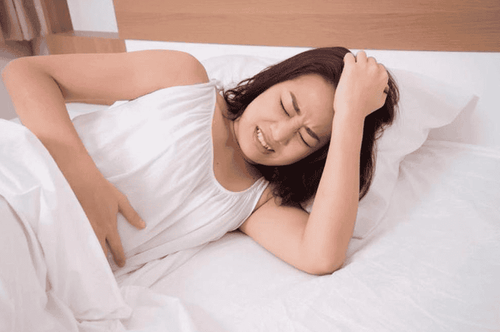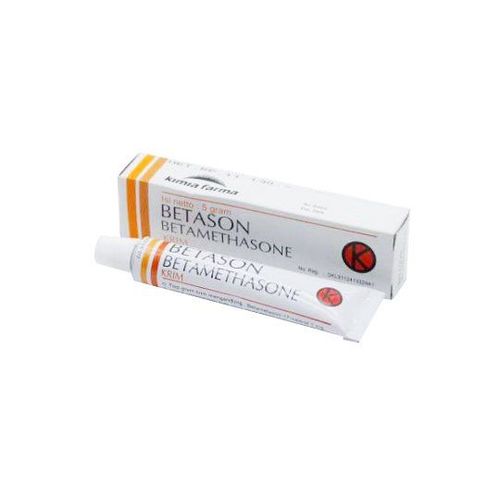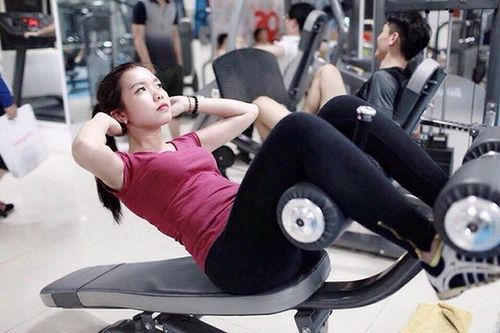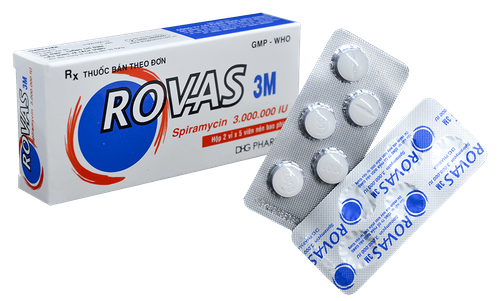This is an automatically translated article.
Knee strain is one of the most frequently asked questions by many people. It can be difficult for a person to know the right way to relieve stiffness in the knee if they don't know what causes it. This includes many possibilities for your intimate area, so it's important that you know how you treat it safely and effectively.1. What is knee pain?
Knee pain is a common complaint that affects people of all ages. Knee pain can be the result of an injury, such as a torn ligament or torn meniscus. Certain conditions such as gout, arthritis, and infections cause painful and tight knees.Many types of mild knee pain respond well to self-care measures. Using physical therapy and a knee brace also reduces pain. However, in some cases, your knee may require surgery.
Muscle strain around the knee is often caused by overuse. A person can strain a knee from a muscle strain, lifting heavy weights, or a sudden injury.
2. Causes of knee strain
2.1. Injured ligaments
When there is increased pressure on the knee, it can lead to ligament damage or injury. Injuries like this often happen to people who play sports and are very active. If you injure one of the knee ligaments with a sprain, rupture, or tear, internal bleeding is possible. This leads to swelling, stiffness and limited range of motion.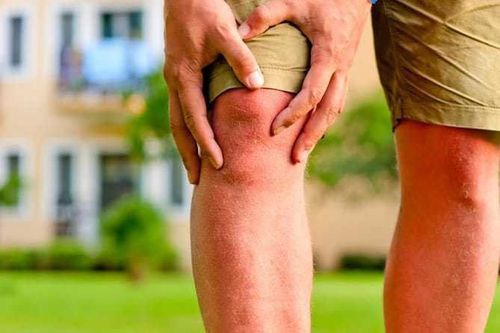
Căng cơ đầu gối có thể do bị thương dây chằng
2.2. Meniscus injury
A meniscus injury occurs when you damage or tear the cartilage between the bones of the knee joint. This can happen when you put pressure on or rotate your knee, a phenomenon that often occurs during sports that involve turning and stopping suddenly. Meniscus tears can also happen while doing something as simple as getting up too quickly from a squat or taking the stairs. Degenerative conditions such as osteoarthritis can also cause a meniscus tear.Meniscal tears can cause pain and swelling. It can be difficult to move your knee throughout its full range of motion, and your knee may feel locked in a certain position. These limitations of motion lead to stiffness in the knee joint.
2.3. Firming after knee surgery
The most common types of knee surgery are:ACL reconstruction Knee Arthroscopic Side Release Meniscus repair or implant Meniscus excision Microfiscle plica Resection Tendon splice Total knee replacement Some stiffness Knees are normal after surgery and can be improved with proper care. It is important that you take the appropriate steps to make a full recovery and prevent knee strain after surgery. Take time to build strength, stability, and flexibility in your knee by performing rehabilitation exercises. It can take three to six months before you can return to work and physical activity.
2.4. Osteoarthritis and rheumatoid arthritis
There are two types of arthritis, osteoarthritis and rheumatoid arthritis, which lead to strain on the knee joint. Osteoarthritis causes the cartilage of the knee joint to wear away, leading to a deviated bone structure. Rheumatoid arthritis damages the lining of the joints, which in turn leads to inflammation. Both types of arthritis can lead to limited function and range of motion, deformity, and tightness.Exercises that strengthen the surrounding muscle groups can help you move more and stabilize the knee.
2.5. Muscular, weak and strong
Keeping the flexible muscles around your knees strong enough to support your body can help reduce or prevent tension in the knee area. Strong legs, hips, and buttocks are said to reduce knee strain.The studies surrounding the benefits of strong leg muscles in relation to knee strain vary widely. Knees of men and women with or at risk for osteoarthritis, neither hamstring nor quadriceps predict frequent knee symptoms such as pain, tenderness, and stiffness.
However, strong quadriceps can help reduce the risk of knee problems, as stronger muscles can help support the knee joint.
3. How to stretch the knee muscles
3.1. Stretching
Stretching will help improve the flexibility of the joint, increasing its mobility throughout its entire range of motion; in other words, how far can it twist, bend and reach. The best time to stretch is when the muscles are warm and flexible. This could be during a pilates class or right after exercise.3.1. Increase your workout
It is a common misconception that resting to stiffen the knee joint will make the condition better. Strengthening your knee can give it the support it needs to manage a day of walking, commuting, and training without stiffness.Moving your stiff knees can be difficult but they won't improve unless you try to move them. Try some of the exercises below to get started. It can be uncomfortable to start moving, but if you avoid movement, it will make the joints stiffer. Remember, hurt doesn't mean harm!
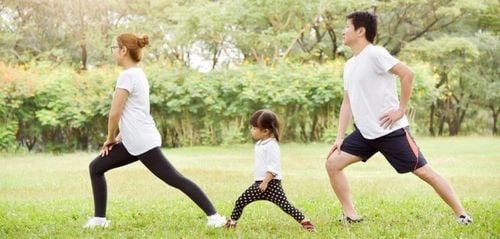
Tăng cường tập luyện để khớp gối linh hoạt giảm căng cơ đầu gối
3.2. Use heat
Think of how stiff your joints feel after a warm shower in the morning or after a long day at work. You feel tight and aching or comforted and soothed.Heat can be very effective for chronic pain, stiffness and muscle tension. It works by relaxing muscles, stimulating blood flow and improving circulation. This can help you increase your range of motion and get ready for action.
Using a hot water bottle, heating pad, or taking a warm 20-minute bath can be a quick and easy way to relieve knee stiffness.
4. How to recover after being hurt
4.1. After a knee ligament injury
Rest with your knees above your heart and perform regular ice treatments. Take pain relievers. Support and protect injured ligaments using splints, splints or crutches while you are healing. Pursue physical therapy, rehabilitation, or surgery if your injury is severe enough to be treated.4.2. After a meniscus injury
To treat a meniscus injury, rest with your legs elevated above your heart and apply ice several times per day. Take non-steroidal anti-inflammatory drugs. Use a compression bandage to reduce inflammation. Avoid putting weight on the injured knee and use crutches if necessary. Pursue physical therapy or surgery if your condition requires it.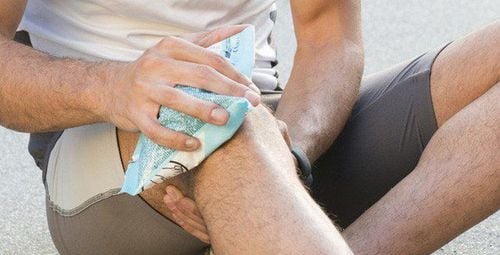
Chườm đá sau khi bị chấn thương sụn chêm
4.3. After knee surgery
Do regular ice packs for 10–20 minutes several times per day. Elevate your legs often for the first few days. Rest and get enough sleep throughout your recovery. Raise your knee. Follow your doctor's recommendations.5. Other things to do
5.1. Reinforcement Exercises
Strength is just as important as flexibility. When the muscles attached to your knee are strong, they provide good support for your knee. This relieves stress and pressure on your knee joint.But if these muscles are weak, they cannot help your knee absorb the shock of movement. They will also become tight, causing pain in the knees and other parts of the body.
To make the surrounding muscles stronger, add knee strengthening exercises to your routine. These movements will ensure that your knees have enough support.
5.2. Pain relief
You can also manage knee pain with many home remedies. These include:Apply ice: The cool sensation of ice helps to reduce pain, swelling and inflammation. Wrap an ice pack in a towel and place it on your knee for 20 minutes. Heat: A hot water bottle or hot pack can also ease mild knee pain. Non-steroidal anti-inflammatory drugs (NSAIDs): If you have mild knee pain, an over-the-counter NSAID like ibuprofen can help. Knee wrap: Wear a knee brace or brace for extra support for the knee.
Please dial HOTLINE for more information or register for an appointment HERE. Download MyVinmec app to make appointments faster and to manage your bookings easily.




